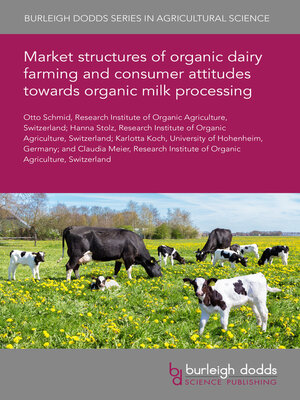Market structures of organic dairy farming and consumer attitudes towards organic milk processing
ebook ∣ Burleigh Dodds Series in Agricultural Science
By Dr Otto Schmid

Sign up to save your library
With an OverDrive account, you can save your favorite libraries for at-a-glance information about availability. Find out more about OverDrive accounts.
Find this title in Libby, the library reading app by OverDrive.



Search for a digital library with this title
Title found at these libraries:
| Library Name | Distance |
|---|---|
| Loading... |
Since 2021, the established retail chains remain dominant, discount retailers are gaining, and traditional organic stores are losing market share. There is growing competition with other labels, especially regional labels, animal welfare labels and hay milk (e.g. grass-fed) labels. A literature review showed that the main motives for consumers to buy organic food were health, taste, environmental protection and animal well-being. When consumers purchase milk, fat content, taste, freshness, price, shelf life, and region of origin are the six most relevant criteria. When introduced to different milk processing methods, organic consumers preferred High Pressure Processed milk (HPP) over pasteurised milk, and had the lowest preference for micro-filtrated milk. This shows that the benefits of specific processing methods, such as the preservation of a food's natural taste and nutritional content, should be explained more clearly via targeted communication in order to better inform consumer choice.







